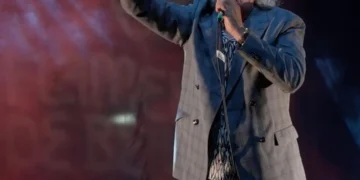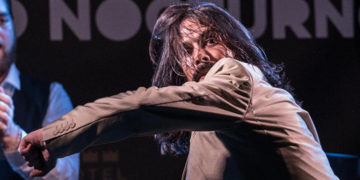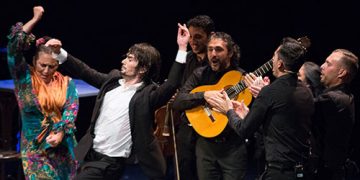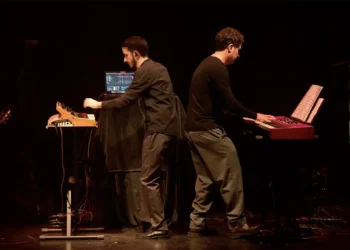|
‘ORÍGENES’ |
|
SPECIAL BIENAL DE FLAMENCO DE SEVILLA 2008 Text: Estela Zatania Choreography, dance and artistic director: Juan de Juan. Music director: Juan de Juan, Daniel Méndez. Music: Juan de Juan. Daniel Méndez (guitar). Jerry González (trumpet). Alaín Pérez (bass). Antonio Serrano (harmonica). Cante: Rafael de Utrera, Genara, La Tana. Lyrics: Juan de Juan. Some things sound so good on paper. “Various nations have coexisted and shared their cultural forms…”. No doubt about it. “…and great music was born which today is the world’s heritage”. Bravo! “That brotherhood, and that search for the essence of life, is the subject of tonight’s presentation”. Oh my god, are there any tickets left?!! But you know how it goes…what Shakespeare said about “many a slip between the cup and the lip” tends to be the rule rather than the exception. But we also know that if the extraordinary dancer Juan de Juan had presented his proposal to the Bienal organization with one single sentence, “I vow to dance first-class flamenco with first-class guitar and singing”, the young genius would never have made it to the stage of the Hotel Triana, nor any other of the Bienal de Flamenco de Sevilla. What then is “Orígenes” aside from a catchy title and a well-written libretto? It’s a group of Cuban-style jazz musicians, three women who sing in chorus even for siguiriyas, cantaor Rafael de Utrera, guitarist Daniel Méndez who has the impossible task of tying it all together and the galactic Juan de Juan in the middle of everything, struggling to communicate his impressive art, when in actual fact he is not able to do anything beyond following the music, and falling back on footwork, because anything remotely subtle is cancelled out by the back-up musicians who exchange those knowing looks and smiles of complicity jazz musicians always indulge in, without so much as a casual glance in the direction of the dancer who, for all practical purposes, is merely adorning the music. Nor is the show’s format helpful: dance, followed by instrumental number, followed by dance, followed by instrumental number, followed by dance, etc., etc… At any given moment you’ve got half the audience feeling fidgety, unless someone is a fan of both flamenco and jazz. Because the tepid efforts to unite both genres, never comes together, and what’s even worse for the flamenco team, the jazz musicians are at ease and play with absolute freedom, but the dancer is seen in a bad light. Every musical genre has its own aesthetic that defines it. This type of jazz reflects a pseudo ethereal sound based on extended chords and harmonies that never quite come down to earth – quite the opposite of the flamenco aesthetic which is firmly rooted in the ground. These are not necessarily incompatible perspectives, but compatibility is not achieved via good intentions alone. A siguiriya is trivialized by harmonized voices in chorus – not because a “taliban purist” says so, but because my ears decreed thusly after examining the evidence (and I’ve learned never to argue with them). The various instrumental number are long, meaning the dancer is off-stage for extended periods. A bulería turns out to be such domesticated songs, with such relentlessly contemporary accompaniment, that it comes off no different from any pop music emanating from any radio in the world. No matter how much underlying compás there may be, as soon as it’s eclipsed, flamenco energy flies out the window. Soleá apolá and bulerías that Rafael de Utrera sings for Juan de Juan, finally provides some important moments, the two communicate, they drench us with their art and the atmosphere of the ample patio suddenly becomes thick with flamenco. Another instrumental breaks the magic, and a tango rumba ends the show, but four-quarter time just doesn’t have the same rhythmic potential as bulería, and the dance has no impact. I consider Juan de Juan one of the current great geniuses of flamenco dance, and believe that not even he himself realizes what an exceptional dancer he is. But he continues to resort to brute force and heelwork, when the only thing he needs to do in order to have the world at his feet…is not use them so much. |



 XV BIENAL DE FLAMENCO DE SEVILLA
XV BIENAL DE FLAMENCO DE SEVILLA



















